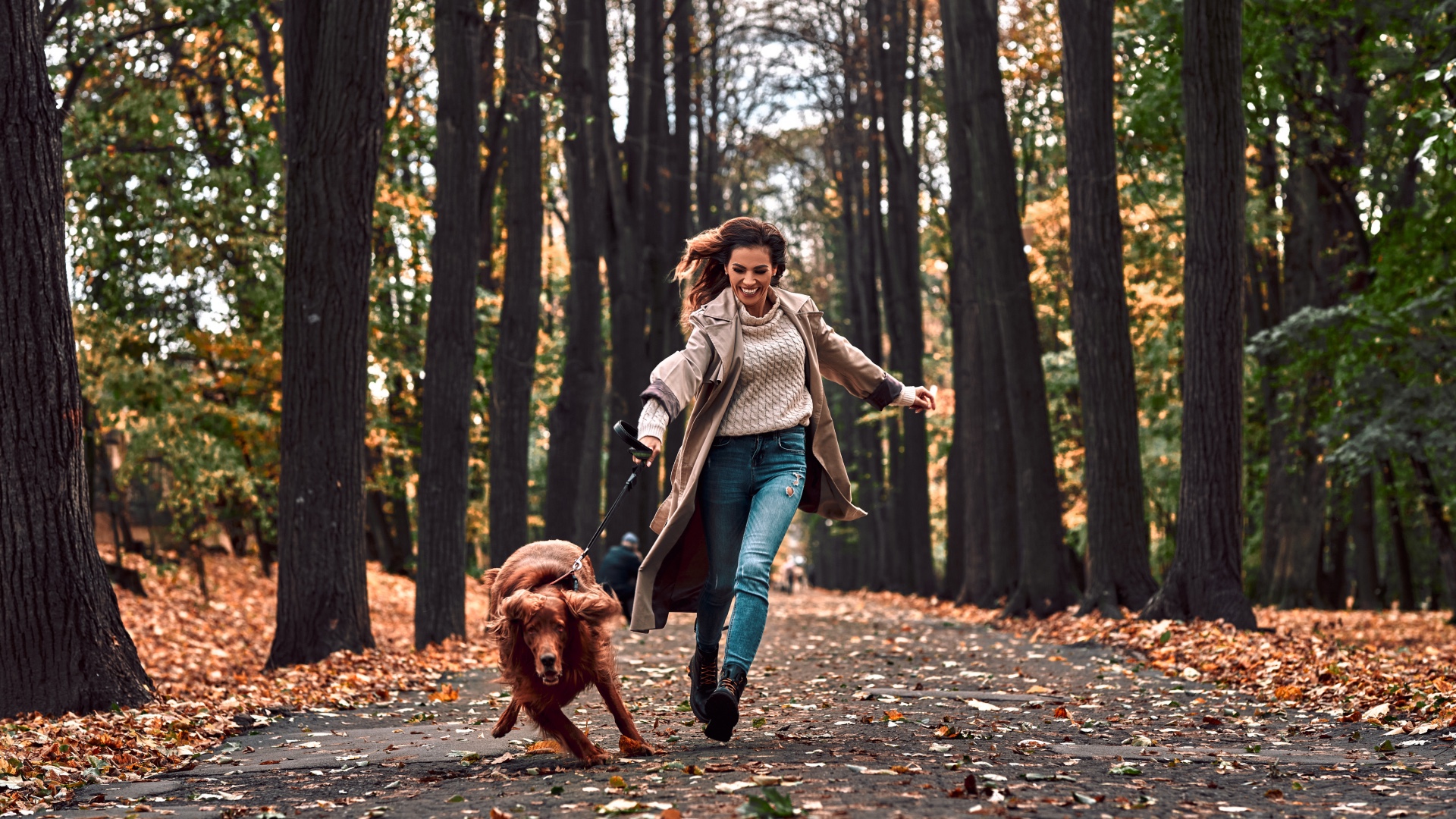
One of the most difficult things to deal with as a dog owner is leash pulling. You take your canine companion out for what you hope will be a relaxing stroll and find yourself being dragged around your neighborhood.
So what's a frustrated pet parent to do? While having a bag of the best dog treats on hand can certainly prove helpful when it comes to encouraging and rewarding good behavior, treats alone won't put a stop to all that tugging.
There's no quick fix for how to stop a dog from pulling on a leash — as helping your pup master any new skill, it takes time. But there are certainly things you can do to assist your dog.
In a recent Instagram post, expert behaviorist Renee Rhoades, shares three very simple tips for helping to improve your dog's leash walking — and the second one is particularly important.
1. Choose a longer leash: Rhoades says it's important to look at how your dog moves and to notice that it's rarely in a straight line — which is why short leashes are so ineffective.
"A lot of pulling can come from the lack of space your dog has to move their body. Traditional leashes are too short and so switching to a six-foot leash can help give your dog just that little bit more room," she explains.
2. Encourage sniffing: While it may feel frustrating having your dog stop every five seconds to smell the roses, sniffing is so important for their mental and physical well-being.
"Instead of fighting against your dog's biological needs, start off the walk with a sniffing activity (scatter food, quickly move to sniff-rich areas) and let your dog use their nose for a couple of minutes. The rest of the walk will be easier!" Rhoades advises.
For more on the benefits of sniffing, be sure to take a look at I tried a 45-minute 'sniffer', and it tired out my border collie more than a two-hour hike! where one dog owner explains the many perks of this natural instinct.
3. Provide alternative outlets: "If the walk is the highlight of your dog's day then no wonder they are on Level 10 when they get outside," says Rhoades. "Encourage sniff-focused activities inside and around the house more often.
Also look at meeting your dog's other innate needs by playing tug, chasing a flirt pole, or chewing on something satisfying every day to give them other outlets, making the walk just ONE of the great things they get to do!"
As with training any skill, mastering the art of loose leash walking takes time, patience, and consistency — but there's a lot you can do to help your dog improve. Check out our guide to three of the most common loose leash walking mistakes (and how to avoid them) to ensure you're steering clear of some typical pet parent pitfalls!
As always, we recommend you consult with a qualified trainer or behaviorist if you feel you and your dog would benefit from some extra support.







